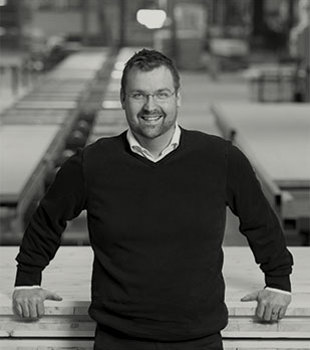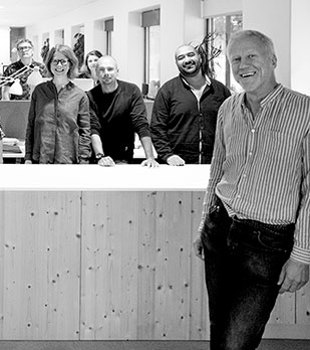There are many reasons to choose wood. A lower climate impact and more efficient construction are just two areas where wood in general and structural components in cross laminated timber (CLT) in particular are the answer. And these two solutions are beginning to catch on around the globe.
Many years ago, when knowledge and awareness of CLT was still in its infancy, I used to dream that CLT would become such a strong brand that it would be synonymous with the actual product, like Styrofoam and Lypsyl.
The amazing thing is that the dream is about to come true. Because something has happened in the market for structural components in CLT in recent years. Having been a lone pioneer in the Swedish CLT market for almost 15 years, we at Martinsons have now been joined by three new domestic players. And we are not the only ones: Norway, Finland, the UK, Japan and the USA are just a few of the countries that are currently investing strongly in CLT.
Global production capacity for CLT amounted to 1 million cubic metres in 2017 and is expected to double to 2 million cubic metres by 2020. That can justifiably be called an explosive trend.
You might well think that, as Product Manager at Martinsons, I would see the establishment of new players in Sweden as a threat. But no, on the contrary. This is a development I’ve been working to encourage all these years as a seller of the product and more recently while travelling all over to preach the virtues of CLT.
It is a brilliant fact that we all benefit from having more players in the CLT industry. As a client, there is much to be gained from replacing a hollow core concrete slab with a much lighter CLT panel, for example. CLT structural elements have high strength in relation to their low self-weight, which makes CLT perfect for extensions to existing buildings.
The more people who hold this knowledge, the further it can be spread. As demand grows, structural engineers and architects will have even more reasons to learn about the material, and finally the material will achieve the breakthrough it truly deserves.
Overall use of wood is forecast to grow by between 10 and 20 percent per year into the future – largely due to the fact that wood is the only fully renewable material that also binds carbon dioxide. The current arms race is to be fully welcomed. We are going to need all the CLT we can produce.





























